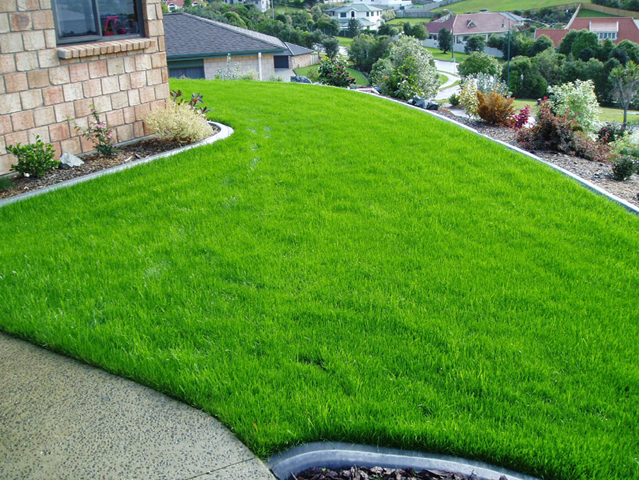
It is always not easy to grow a healthier lawn, but thanks for below 10 ways of helpful information that will improve your lawn to be more greener, healthier and beautiful.
#1 Improve Your Soil
The soil is the foundation of organic plant growth. The base for a beautiful, healthy lawn is soil. Many homeowners do not consider soil composition as a potential threat to the health of their grass. But more often than not, many grass problems can be attributed to unhealthy soil.
Healthy plants grow in healthy soil, growing deeper roots in soil that holds more water and nutrients. So building your soil is the best way to save water and work in your lawn and garden.
Get to know your soil. Dig in and take a look for thatch, compaction, or other soil problems you can fix.
Add compost. Dig or till 2-3 inches of compost into the soil when planting new garden beds or lawns. Every 2-3 years, spread another 1 inch on garden beds or ½ inch on lawns.
Use mulch. Spread 2-3 inches of fall leaves or grass clippings on beds in spring or fall. For woody plants and trees, use wood chips or coarse bark as mulch.
Fertilize responsibly. Trees and shrubs can get the nutrients they need from compost and mulch. For lawns, flowers, and gardens look for the words “Natural organic” or “Slow-release” on fertilizer products, to feed plants slowly, develop healthier roots, and reduce runoff to our streams and lakes.
Refer more at Organic Soil https://www.weedtrimmerline.com/organic-soil/
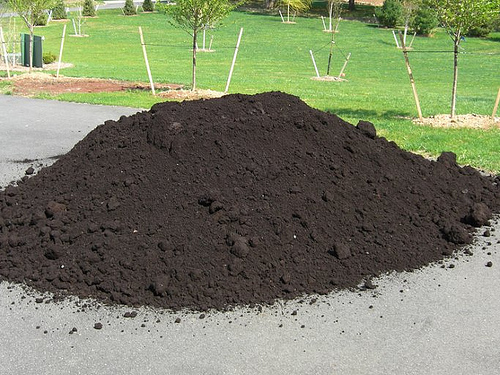
#2 Feed With Compost
Add compost to increase the soil’s organic matter content to as much as 7 percent and greatly improve water retention at the same time, Osborne says. To apply compost as a topdressing for areas smaller than 2,000 square feet, use a wheelbarrow and drop small piles intermittently around your lawn; then rake the compost out to about a quarter to three-eighths of an inch, recommends Osborne. For larger areas, use a spreader.

#3 Water Your Lawn Properly
Be sure to water deeply and infrequently. Avoid watering from 11 AM-3 PM, the hottest part of the day. It is best to water between 6-10 AM. There’s less wind, less hot sun, and your lawn has a full day to dry. Watering at night invites mildew and fungus but if you can’t water in the morning aim for around 4-7 PM. In the hot afternoon, much of your water can be lost to wind and evaporation. If you live in the dry southwest, though, the rules are different. There, watering in the evening or night causes less evaporation.
Check the soil before you water. Probe with a finger of trowel to see if the soil is still damp a few inches down. When it’s dry down at the root zone, it’s time to water.
Water deeply, but less frequently. An hour after watering, check the soil again to see if you’ve penetrated as deep as the roots reach. Adjust your watering time to moisten the whole root zone, but then wait until the upper few inches of soil are dry before watering again – that encourages deeper roots.
Water slowly, or start and stop irrigation, to prevent surface runoff and give water time to penetrate.
Get water right to the roots, by using a watering wand with shutoff for small areas. For larger areas, drip or soaker hose under mulch delivers water efficiently right to the roots.
Make every drop count. Water early or late in the day to reduce evaporation, build your soil with compost and mulch, and choose low water use plants.
Refer more at Best Lawn Watering https://www.weedtrimmerline.com/best-lawn-watering/
#4 Use Organic Lawn Fertilizers
The two basic types of organic lawn fertilizer that are used on lawns: natural organics and synthetic organics.
The term synthetic organic is primarily a reference to “urea”, the nitrogen source found in most synthetic organics. Urea can be altered through chemical reactions with other chemicals to produce different varieties of slow release products.
Urea is classified as an organic because it contains carbon in its structure.
Synthetic organic nitrogen can be blended with natural organic fertilizers to give it a variety of nitrogen levels and release responses. These products are referred to as “bridge products”.
Note: Synthetic organics should not be confused with “inorganic” chemical fertilizers, such as ammonium nitrate or ammonium sulfate.
The benefit of using organic lawn fertilizer
Organic lawn fertilizers have brought new options to homeowners who desire both a green lawn and a green lifestyle. Environmental issues continue to be a concern in our society, and good citizens everywhere are doing all they can to preserve the health of our beautiful planet. Using organic fertilizers instead of chemical products is an easy way to make a difference, and many would be surprised at the effectiveness of the organic solutions. Listed below are some of the many proven benefits of natural fertilizers and insecticides.
Using organic lawn fertilizer offers your lawn an organic source of nitrogen and other micronutrients. However, the nutrient content can vary greatly depending on the type of organic matter used. You should always read the nutrient analysis to ensure it has the required nutrients to meet your grass’ needs for that time of year. If the nutrient analysis is insufficient for your lawns needs, you can choose another type or you may need to supplement your lawn with an application of an inorganic or synthetic organic fertilizer.
Fertilize once or twice a year.
This is sufficient for an attractive lawn. Cool season grasses are semi-dormant in the summer; fertilizing during summer will be ineffective. Fertilizing in early fall promotes vigorous lawn growth the next spring.
Use a fertilizer with time-released, water insoluble nitrogen.
These fertilizers are less likely to burn your lawn with excess nitrogen, and slow-release allows the roots to absorb the nutrients as needed. In most instances, choose fertilizers containing at least 35% – 50% of their nitrogen supply in the “slow-release” form, such as sulfur-coated urea, methylene urea or various natural organic products. With fast-acting fertilizers, some nutrients are washed away with watering or rain, and the wasted fertilizer pollutes ground water supplies.
Refer more at Organic Lawn Fertilizer https://www.weedtrimmerline.com/organic-lawn-fertilizers/
#5 Cutting The Grass Properly
Mowing the lawn not only in suitable time with the efficient tools, but also with proper mowing techniques.
The best way to insure good lawn health is to mow properly. Here’s how:
Start with a sharp mower blade.
Mowing more often.
Cut off no more that 1/3 of the grass blade’s length at one time to prevent shocking the plant.
Allow the grass clippings to fall back onto the lawn (mulch) instead of bagging them.
Clippings provide important nutrients, and contrary to conventional thought, do not promote thatch.
The proper height for mowing your lawn depends on the type of grass, the season, and the growing conditions. For example, bent grass can be mowed under 1/2″ while tall fescues should be 3-4 inches high. Choosing the correct mowing height is important since:
Proper mowing creates a low-maintenance, drought-tolerant lawn.
Mowing discourages undesirable grasses and weeds while encouraging your chosen grass type. For example, mowing fescue higher will discourage Bermuda grass which is low-growing.
Setting Mower Cutting Height
Shady grasses grow better if mowed a little higher.
Raise the blade to the top of the cutting range for your type of grass (see chart below) during drought conditions in summer to reduce the stress on your lawn.
Cut warm-season grasses at the lower end of the cutting range in early spring to remove dead blades.
In general, cool-season grasses do best when cut as high as possible.
Different varieties within the same grass type may vary as to the best cutting height, so try to identify the specific variety you have (such as ‘Zenith’ zoysia or ‘Empire’ zoysia), then check with a sod or seed supplier for cutting recommendations.
Refer more at Mow The Lawn: The Definitive Guide https://www.weedtrimmerline.com/mow-the-lawn/

#6 Leave Clippings & Observe The Weeds
Sometimes referred to as “grass-cycling”, this provides nutrients (nitrogen, phosphorus, water) equivalent to one application of fertilizer. Clippings do not cause thatch. Mulching mowers are also available which help the clippings hide in the grass. For effective grass cycling, wait until the lawn is 3″ tall, then set the mower height to remove 1″. The clippings left on the lawn will quickly disappear from view. Of course this technique also saves hauling yard waste to the landfill – some states have banned yard waste from landfills.
Instead of bagging up grass clippings and sending them to the landfill, invest in a mulching blade for your mower and leave the clippings on your lawn. As they decompose, they add valuable organic matter to the soil and about 2 pounds of nitrogen per 1,000 square feet each season, which means you have to spend less time and money on fertilizing. Contrary to popular belief, letting the clippings decompose on your lawn does not cause a buildup of thatch (a layer on top of the soil that blocks water and nutrients from reaching the grass’s roots). Rather, thatch is caused by overfertilizing.
Observe the weeds.
Dandelions thrive at a pH level of about 7.5, and are a sign to add gardeners sulfur to lower the pH. Clover and medic are sign that your lawn may be nitrogen poor, and needs compost or a nitrogen-weighted fertilizer.

#7 Use The Right Tool
There is a saying goes: to yield twice the result with half the effort. The right gardening tool makes job much easier. As the development of technology of gardening tools, it is lucky to have a handful of inexpensive tools to handle the most common lawn and garden maintenance. All of these tools make perfect housewarming gifts to give — and receive. A garden tool is any one of many tools made for gardens and gardening and overlaps with the range of tools made for agriculture and horticulture. Garden tools can also be hand tools and power tools.
Refer more at 25 Gardening Tools Make Job Easier https://www.weedtrimmerline.com/gardening-tools/
#8 Try Use As Less pesticide/herbicide As Possible
Accept a few weeds, and crowd out problem weeds by growing a dense healthy lawn. Use a long handled weed puller to easily remove dandelions without bending over. Weeding is easiest when the soil is moist. If you want to use weed killer, don’t spread “weed and feed” all over (it gets into our streams) – just spot spray the problem weeds.
Pesticides kill the soil organisms which contribute to a healthy lawn. The sooner you remove harsh chemicals, the faster your soil will recover. Repeated past use of toxic chemicals may have destroyed the macrobiotic life that exists in healthy soil; it will take time, at least a season, for the soil to begin to recover. If lawn chemicals are used, clean out pesticide and fertilizer applicators and empty containers on the lawn, where the residue will be utilized. Do not clean out on sidewalks or driveways, or residue will go directly into water supplies.
#9 Reduce thatch
Thatch is a layer of dead grass and grass roots that has accumulated on top of the soil surface. If this layer gets to be more than about a half inch thick, it begins to block the flow of air, water and nutrients. Grass roots start to grow along the soil surface rather than down into the soil. These roots become intertwined and form a dense mat. A lawn with a severe thatch problem has little drought tolerance and becomes susceptible to a host of pest and disease problems. Dead patches of lawn can signal thatch problems. You may also notice a spongy feeling when you walk across the lawn.
It is not necessary — or even desirable — to remove all of the thatch. A thin layer serves to insulate and protect the root zone. If you have a severe thatch problem, correct the problem incrementally to avoid damaging the lawn. Minor thatch accumulations can usually be removed by raking vigorously with a steel-tine rake. For severe problems, consider renting a mechanical dethaching machine. Early fall is the best time for dethatching. Once the thatch has been reduced, you can prevent future buildups by reducing the amount of fertilizer you apply, and avoiding frequent, shallow irrigation.

#10 Reseeding or over-seeding?
If you are adding seed to cover bare spots or a thin lawn, use hardy perennial ryegrass and drought-tolerant fescue seed mix. Alternately, reseed with a drought-tolerant, low-maintenance eco-lawn seed.
The weather, kids, and pets can be tough on lawns. Lack of water, too much heat, wear & tear, and other problems can make it look worn and thin. You can help reinvigorate your lawn by overseeding. In the north, spring and fall give you the ideal conditions for cool-season grass seed: cooler temperatures and more moisture. In the south, late-spring through mid-summer provide ideal conditions for warm-season grass seed. The following are simple steps to overseed your lawn.





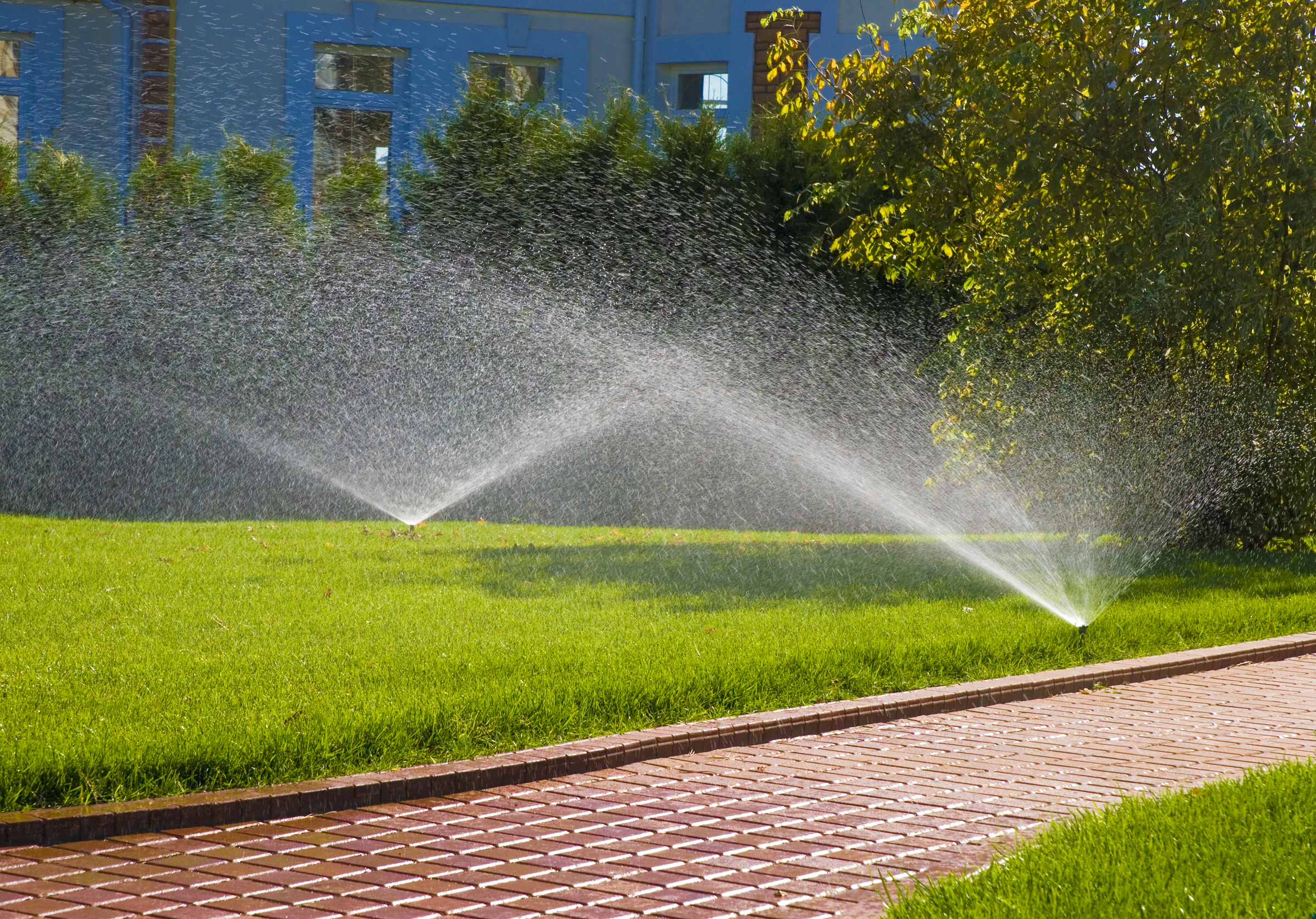



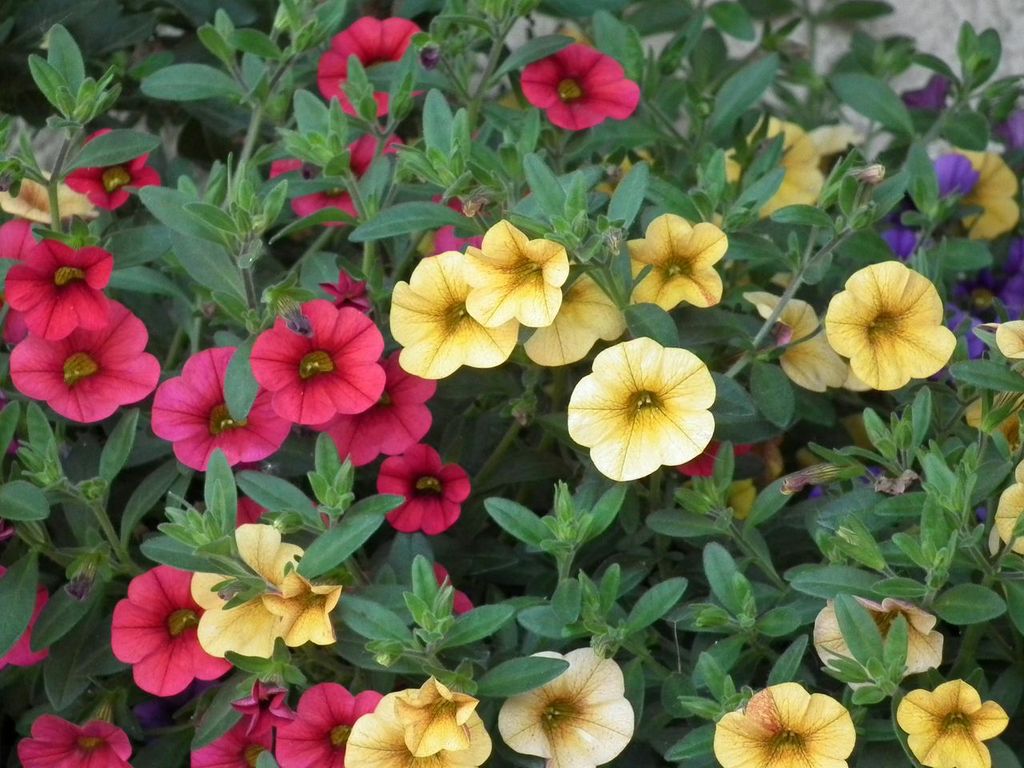
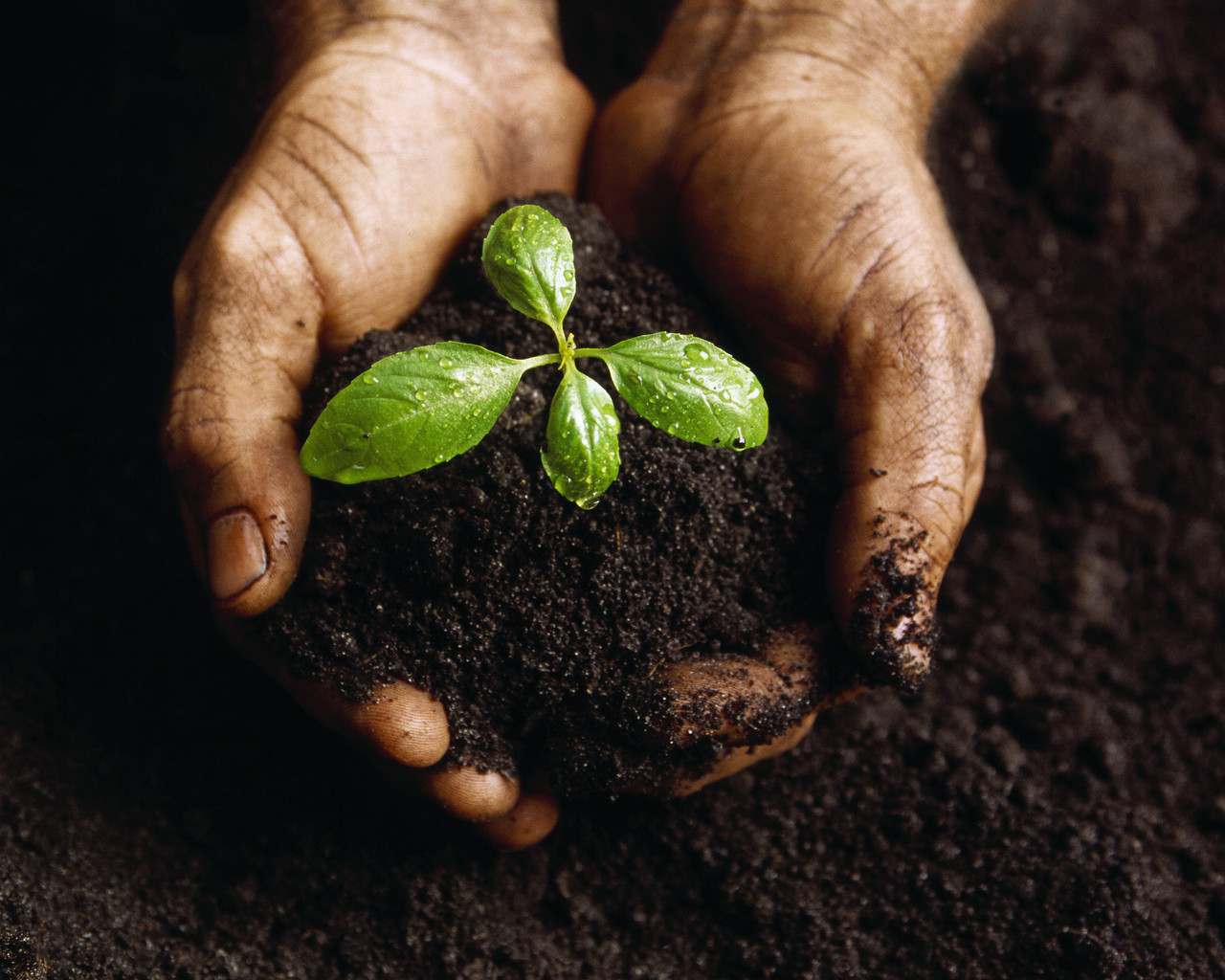
 The organic soil is the foundation of organic plant growth. The base for a beautiful, healthy lawn is soil. Many homeowners do not consider soil composition as a potential threat to the health of their grass. But more often than not, many grass problems can be attributed to unhealthy soil. The concept of organics has to do with enriching the soil and increasing soil flora. In nature, nutrients enter the soil as organic matter is broken down by soil microorganisms. Therefore, the philosophy behind the use of organics in lawn care is simple. In feeding the soil, you feed the soil microorganisms, which in turn, feeds the plants.
The organic soil is the foundation of organic plant growth. The base for a beautiful, healthy lawn is soil. Many homeowners do not consider soil composition as a potential threat to the health of their grass. But more often than not, many grass problems can be attributed to unhealthy soil. The concept of organics has to do with enriching the soil and increasing soil flora. In nature, nutrients enter the soil as organic matter is broken down by soil microorganisms. Therefore, the philosophy behind the use of organics in lawn care is simple. In feeding the soil, you feed the soil microorganisms, which in turn, feeds the plants.

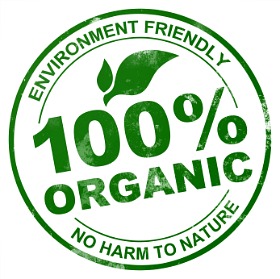 The two basic types of organic lawn fertilizer that are used on lawns: natural organics and synthetic organics.
The two basic types of organic lawn fertilizer that are used on lawns: natural organics and synthetic organics.